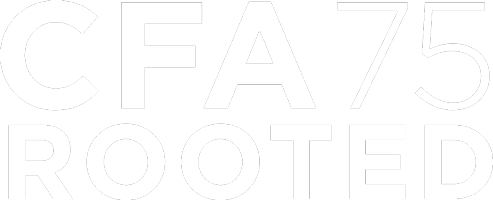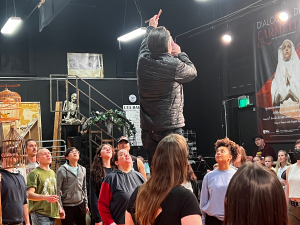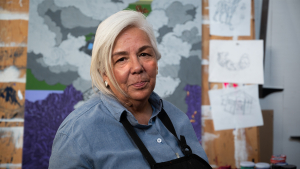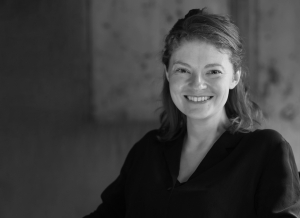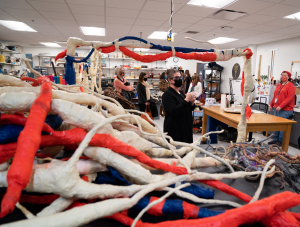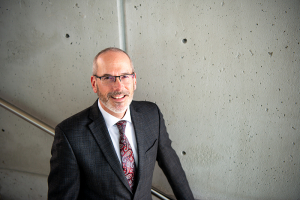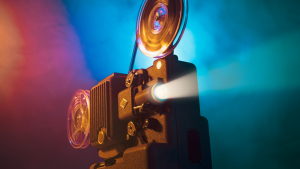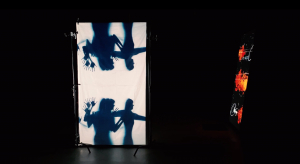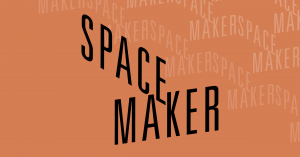Displaying items by tag: G1O2
CFA Outstanding Research 2022 Finalists
Each year, many fine arts students immerse themselves in exciting research, leaving a mark on their disciplines.
The College of Fine Arts is excited to celebrate the exciting work of two finalists for Outstanding Undergraduate Researcher 2022.
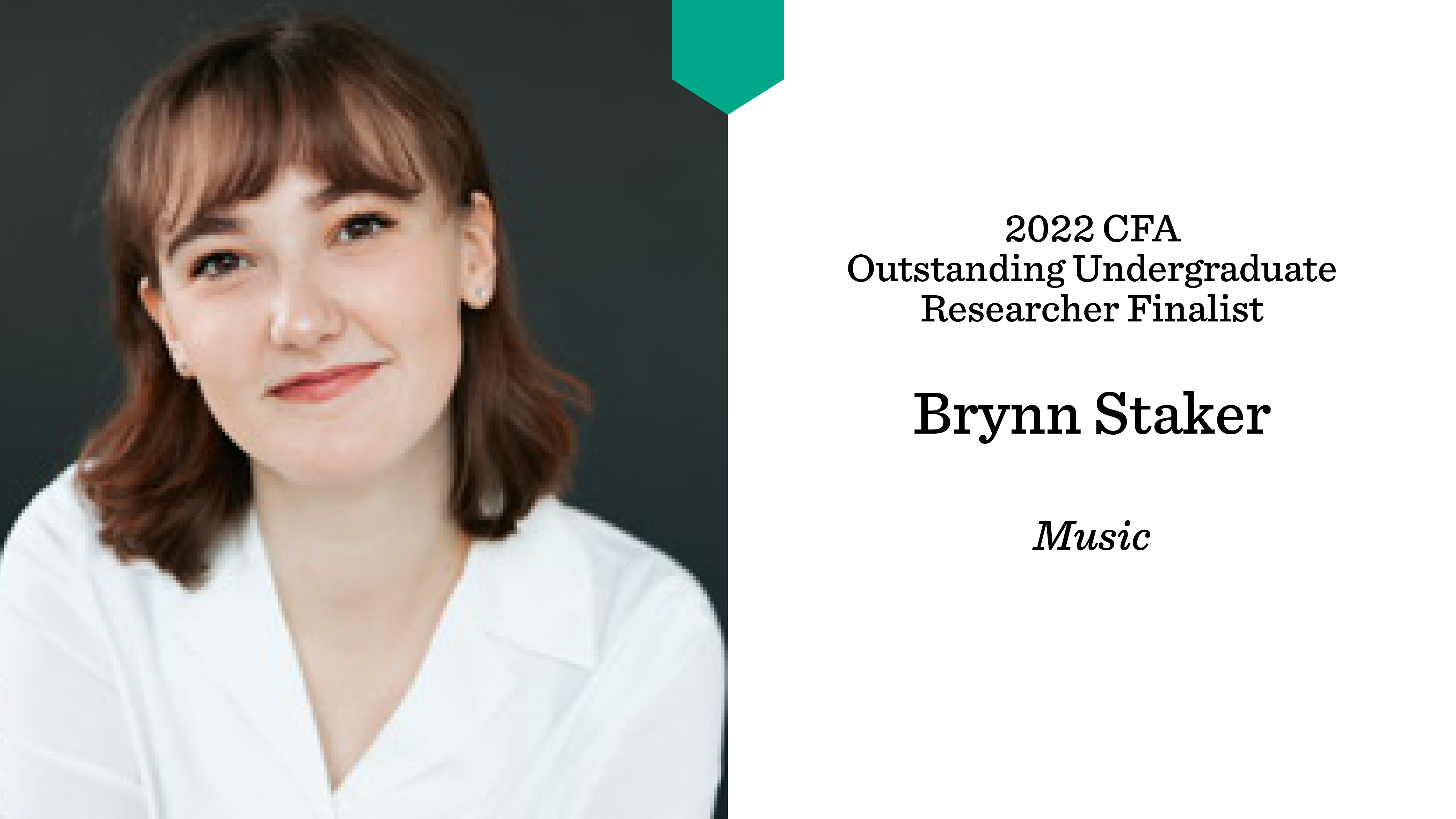
Brynn Staker St. Clair collaborated with Dr. Elizabeth Craft in the musicology department in the U School of Music on her research on early American musical theatre. Staker catalogued and organized clips from Illinois newspapers that provided much-needed information on George M. Cohan and early American musical theater, as well as examined Utah newspapers from Cohan's time to better understand his national reach. She presented the research findings alongside Dr. Craft at "Fridays with Faculty." Staker was also employed by the University of Utah History Project, working to build a comprehensive history of the School of Music, spending signifiant library hours cataloguing programs and other historical university resources.
In Their Own Words
"I began my research because I took a class from Dr. Elizabeth Craft. I discovered a fascination with American music. It’s always been my favorite to sing, as I consider myself a poetry nerd. Dr. Craft talked about the book she was writing, and that immediately caught my attention. I credit her with inspiring my interest in research.
This semester I have expanded my research to focus on local performances. I have loved familiarizing myself with Utah performance history: the significant players, the vast appreciation, and the general response. I feel like this branch of my research has helped me connect very personally with the material.
My research last semester was all about race in American musical theater. This was a fascinating project for me and allowed me to look more deeply at the prejudices embedded in the performances this country has come to love. It certainly taught me to look closer and to examine art through different perspectives."
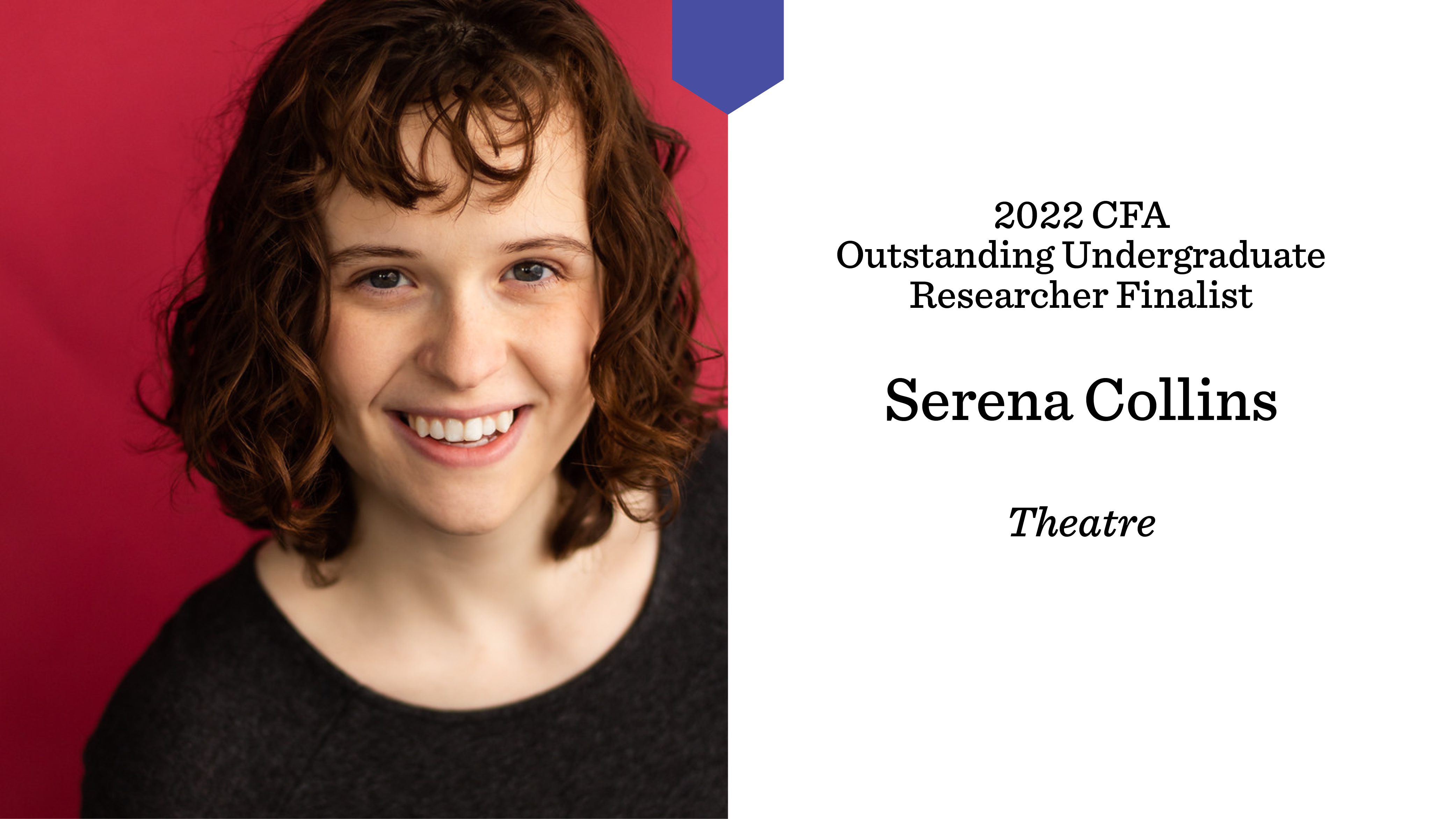
Serena Collins saw her original, full-length play entitled "Sympathizer" through all of its writing and production stages over the span of nearly two years and four academic semesters. Her research culminated in an off-campus production of the play, as well as a staged reading on campus as part of the Department of Theatre's New Plays Workshop, April 25-27 at PAB 115.
"Sympathizer" centers around main character Calla, who finds herself in uncharted territory when her oldest and closest friend does something bad. With strong opinions on all sides, Calla tries to figure out what is right in the #metoo era. The script lives in the aftermath of sexual assault and begs the question, how do we begin to heal?
In Their Own Words
"One of my favorite discoveries came from an audience member at the production of "Sympathizer." They were a [sexual assault] survivor themselves and after the performance we had a long conversation about the difficulty of a survivor seeing their perpetrator go on to live a normal life. In that conversation, I realized an important nuance that the script was missing. I realized that, as important as it was to highlight empathy as an agent of change, it was equally important to validate the fact that no one owes a perpetrator a second chance. Full stop. That conversation added a whole scene to the current draft of the script!
When I started thinking about these issues, I was afraid to share my questions and thoughts with the people in my life because it was taboo to question the logic of my political group. Questioning meant disloyalty—it was equated to being what my peer group called an “abuser sympathizer.” Now, I am less afraid of social repercussions because I feel so passionate about the conclusions that my research has brought me—human beings are complicated. Shame doesn’t work. Empathy does.
Professors in the Actor Training Program would often ask us to identify our artistic voices by asking ourselves the question: 'as an artist, what do you need to say?' Through my research, I have found my artistic voice. What I believe I have to offer to the world is my passion about and belief in the power of empathy."
Performing Sondheim’s “Sweeney Todd” with the University of Utah opera program has been a long-held aspiration for director Robert Breault. Beyond its cultural popularity, moody environment, and complex characters, the show allows for broad collaboration and interdisciplinary participation.
“I always try to choose pieces that will allow [U Opera] to include as many students as we can. ‘Sweeney’ has a lot of ensemble work that allows more performers to be part of the storytelling – there are about 40 of us involved,” Breault said.
To pull off the mighty production that runs this weekend (April 15-16) at Kingsbury Hall, collaborators from all corners of the U’s performing arts units have come together, embracing the idea that “it takes a village.”
The cast is made up of not just opera students, but those in musical theatre and dance as well. Logistics will be run by Stage Management students in Department of Theatre, led by Amber Bielinski. Music director Jeffrey Price also directed the music in the first Utah production of Sweeney 40 years ago – and was the first to plant the idea of doing the production at the U. The Utah Philharmonia, conducted by School of Music professor Robert Baldwin, provides the score.
It is especially exciting to see faculty from each of the performing arts units lending their particular expertise to elevate the production. School of Dance’s Melissa Bobick brings her ballet eye as choreographer. Department of Theatre’s Sarah Shippobotham serves as both Intimacy Director and as a dialogue coach.
"The idea that we can have this interdisciplinary cooperation in one production mirrors the way it will be in the real world. Stage management, singers, dancers…we all get to know each other, and realize how it all works together."
After an already extensive singing career, James Bobick, who plays the titular role, is pursuing his MM in the School of Music. Working in this way, he says, is an authentic glimpse at how the professional world operates.
“This is about training young musicians, singers, and performers. Whether they become professionals or not, they can use this skill set as they move on in their life and in their careers," he said. “The idea that we can have this interdisciplinary cooperation in one production mirrors the way it will be in the real world. Stage management, singers, dancers…we all get to know each other, and realize how it all works together.”
Although musical theatre and opera often vary quite a bit stylistically, “Sweeney Todd” has been an opportunity for the two disciplines to learn from one another, and get stronger as a result. “The musical theatre students are getting a chance to hear how we sing, and we are learning from their acting,” Breault explained. “We’re singing with mics for the first time, and we aren’t using supertitles. I did this purposely to put the pressure on all of us to improve our diction.”
Undergraduate senior Brynn Staker, who plays Beggar Woman, also spoke to how the character’s dramatic needs were affecting her singing approach. “The accent work has been tricky,” she said. A lot of times when you are singing, your vowels tend to sit in the same place. In this, it’s been different because accents communicate class differences. We’ve had to work to get a brighter sound to convey the same things the accent would convey while we sing.”
There is quite a bit of character work necessary to bring this dramatic tale of revenge home.
“Sweeney is, like the great operatic characters, complicated, and has more levels of his personality than most people give him credit for,” Bobick said. “This is a real man, with real problems, and real conflict. And as he seeks to resolve them, it’s not a spontaneous impulse – this is fifteen years of brooding over injustice. Fifteen years he has tried to figure out how he can avenge the wrong done to him and his family.”
Staker agreed that the story allows for deeper performance. “I feel like in opera we put on a mask a lot – we sing big words with big sound,” she said.” This show gives us a chance to portray real people in real situations, and allow the audience to connect with them on a vulnerable and intimate level."
Ultimately for Breault, the best thing about "Sweeney Todd" is coming back together after two full years of missing the stage – another reason to more fully embrace collaboration.
"It’s been over two years since we have had the family feeling in the Voice Box that we had before the pandemic. To have everybody hanging out, to see people spontaneously dancing while working on scenes – I see the joy of finally coming together again. This has been so fun for me as a director."
Attend the tale of Sweeney Todd!
Tickets on sale now
U Students free with Arts Pass
Apr 15 @ 7:30 pm
Apr 16 @ 7:30 pm
Kingsbury Hall
V. Kim Martinez, Department of Art & Art History Chair, wins 2021 Governor's Mansion Artist Award
Each year, Utah’s governor honors three visual artists and three performance artists with the Governor's Mansion Artist Award. The College of Fine Arts is elated to share that V. Kim Martinez, Department of Art & Art History Chair, is one of the selected artists for 2021. Awardees were selected by Governor Spencer Cox and First Lady Abby Cox, from a group of nominees submitted by the Governor’s Mansion Artist Awards Committee.
“Receiving The Utah Governor’s Mansion Visual Artist Award is a reinforcement of my ideals of art as a vehicle for social change. Art has massive power to incite people to find connections to act on the challenges we face by identifying with one another across social, political, gender, and racial lines.”
-V. Kim Martinez
The 2021 award winners include:
- Ta’u Pupu’a, opera tenor
- Elsie Holiday, master Navajo basket weaver.
- Diane Stewart, owner of Modern West Fine Art, benefactor
- V. Kim Martinez, muralist, professor and community activist
- Jack Ashton, violinist, director of Young Artist Chamber Players, educator
- Camille and Alicia Washington, founders of Good Company Theatre
- Fidalis Beuhler, painter, professor
PBS Utah is producing a documentary series about the honored artists to air in the spring of 2022.
Here is a bit more about V. Kim Martinez, shared from the Governor's Mansion Artist Awards program: 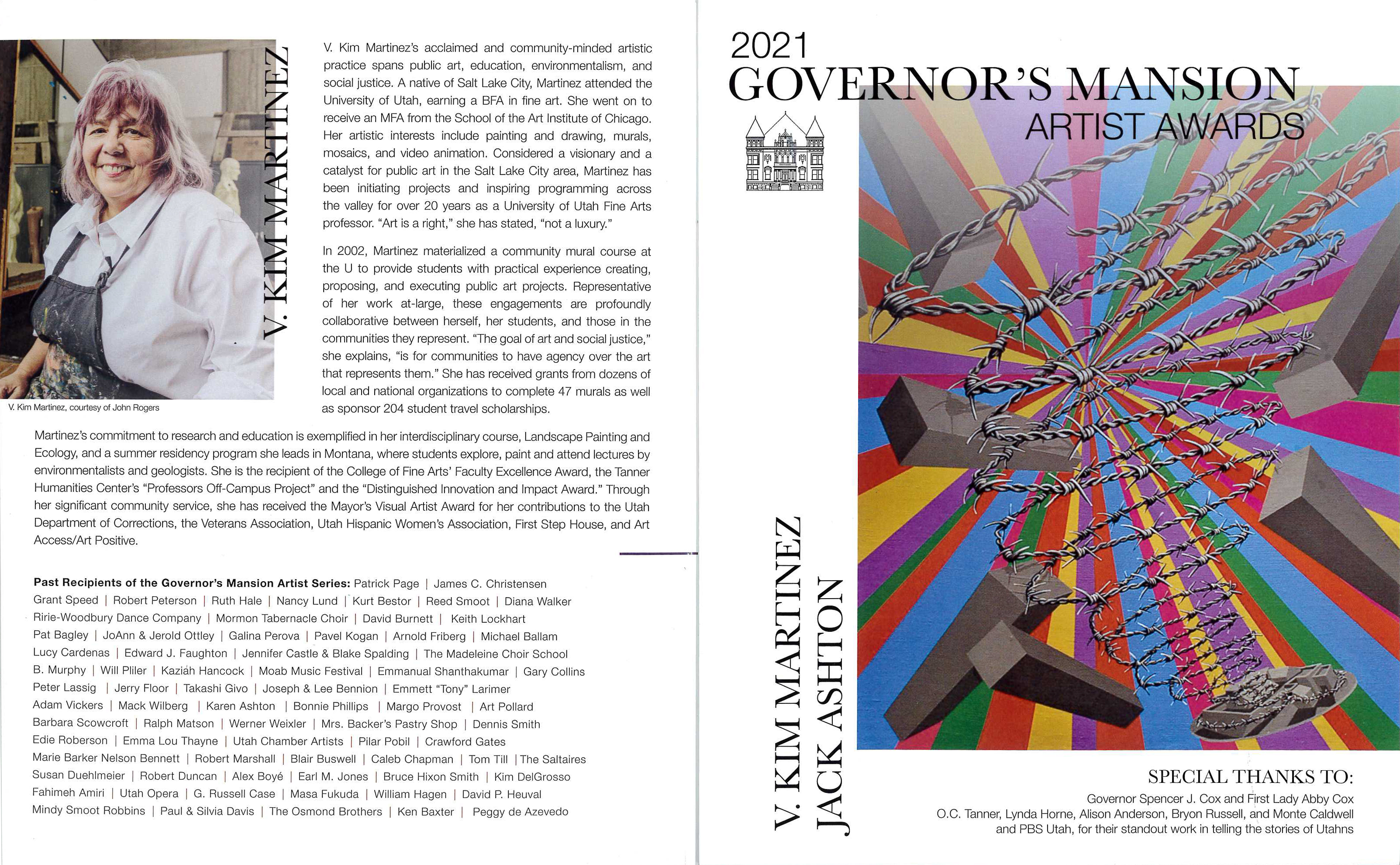
MAGNIFYING is a series dedicated to showcasing the talent of our students, faculty, and staff to help you learn more about the remarkable individuals within our creative community here at the College of Fine Arts.
Meekyung MacMurdie is a historian of Islamic art and architecture, with a focus on manuscripts. Her interests include aesthetics and artistic practice, the creation and transmission of knowledge, cultural encounters and exchanges in the medieval world, and historiography. She is currently at work on her first book, which investigates the ontological status and evidentiary stakes of pictures, diagrams, and tables in Arabic scientific and medical works produced in the eleventh through thirteenth centuries. Positioning geometry as a meeting ground between the philosophical and applied arts, the book theorizes the historical significance of facture, while also exploring the mutability of viewers’ reception of visual forms. The project reframes questions about ornament, abstraction, and style in terms of cognition and reasoning in a pivotal period: following the Islamicate reception of late antique forms and preceding early modern articulations of motifs. In addition to research on premodern topics, MacMurdie is collaborating with Jesse Lockard, a historian of post-war architecture, on a project that examines the formative years of the discipline, when—they argue— art history methods were entwined with artisanal tools. The study positions pattern books as a bridge between critical historiography and material object studies, as well as (problematic) early articulations of global art history. MacMurdie received her PhD in art history from the University of Chicago (2020). Before joining the University of Utah for the fall semester in 2021, she is completing the current academic year at the University of Bern as a post-doctoral fellow in the European Research Council-funded "Global Horizons in Pre-Modern Art" research group.
What were your initial career ambitions when you started your undergraduate studies?
I had a pretty firm idea that I wanted to study history of some sort. I was one of those odd children who was always reading lots of history books. It was really a broader interest in narrative, and storytelling, and communication. Then, as I was going into college, I was also interested in political science, and the intersection between history and real-world stakes. I had never taken art history until I got to college, but I did have one history teacher in high school that would bring in images. I specifically remember this famous painting, "Napoleon Crossing the Alps."
As an undergrad, I got to take an art history class and sort of see what it was about – and it was really exciting to me. There was this whole new world of visual material evidence that we can think about when working as a historian. In terms of having a clear career or path, I don’t think I ever really had one actually. I was just following my interests and seeing where it took me. But I felt somehow confident that it would emerge.
Who were some early mentors?
I’ve been extremely lucky during my academic training to have had really excellent mentorship, particularly female mentorship. Even as an undergraduate, I had a professor, Lynda Sexson, whose classes were really engaging and theoretical. I think I took everything she taught. As I progressed through the program, I had opportunities to do research projects with her, too. She had a way of teaching that blended critical thinking with imagination. I think those two things are inseparable, actually. That was a fantastic model.
In grad school, likewise, I had excellent mentors who – I don’t know how they did it – but they intuited what I needed when, helping me find my weaknesses and develop them into strengths.
Curiosity is not just this innate thing. It requires labor – it’s actually a skill. So, I would say train your curiosity, and ask questions.
What drew you to Islamic Art and architecture? How has your area of specialization evolved over time?
When I started graduate school at the University of Wisconsin, I originally thought I was going to work on early modern botanical and scientific prints. I was interested in landscaping as material practice and the production of knowledge and artistic practice. As I was going through the program, I was starting my master’s thesis working on a French botanist traveling to the Middle East recording observations and collecting samples. During that process, I started thinking, “What is the other side? What is the knowledge that is being produced there? What would botany have looked like for someone in the early 18th century Ottoman Empire, for example?” From there, I started looking at things and reading, and I had tons of questions and it didn’t seem like there were many answers. So, I decided to switch programs.
My advisor at Wisconsin, Jill Casid, was incredibly supportive and helped me apply and think about how my study would work. I remember her telling me, after my acceptance came in, that I should go wherever I would be supported to do my best work. That’s something that has really stuck with me. We are getting into this because we are curious and because there is pleasure in it, but we also want to do our best work. That is what led me to Chicago, and to studying there as an Islamicist.
I was going to ask, what goes into choosing a graduate program?
Support in the broadest sense – which means things like opportunities to take languages, funding packages, who your peers and faculty will be. These are people who you will learn a lot from as you go through. Also it means things like, “Is this a city I can live in?”
And how did your goals change once you were in grad school?
I don’t mean to convey that I am not an organized planner. I seem to be in every other aspect of my life except for my academic work. Even as a grad student, I didn’t have a firm idea. Or another way to put it is that the market is so competitive that you are trying to gain as many skills as possible. I certainly tried to diversify myself with different kinds of experiences: museum work, academic teaching. I didn’t think about what the career really meant until very late in the PhD. I did a lot of preparation for all sorts of different paths. I was waiting for things to unfold.
Can you tell us a bit about the projects you are currently working on?
There are a couple big projects that are in the works. The first is a book project on 12th and 13th century Islamic, and particularly Arabic, tables, diagrams, and pictures. And the second is a collaborative project I’m working on with Jesse Lockard, who is a historian currently at the Kunsthistorisches Institut in Florenz. We have been friends and colleagues for a very long time. We were in graduate school together.
I love to collaborate. I love learning from people. Most of my meaningful collaborations have developed over longer periods of time in the sense that they are rooted in longer conversations about different subjects. Jesse teaches architecture and architecture theory. I am an Islamicist. We were both, at the time, teaching courses where we were talking about Owen Jones’ "The Grammar of Ornament," but for very different reasons. We really sort of stumbled into this project that now seems to be about everything and may result in a book. Right now, we are working on an article together.
We have many early attempts at what today we would call a global art history. And, I think you could argue that pattern books are one of these early attempts. But they are rife with colonialism, imperialism, and really problematic categories and ways of thinking cross-culturally. One of the main questions we are really interested in is whether these kinds of problematic archives still have purchase – whether we can use them as an entry way into making a better art history that is more inclusive, more encompassing, that asks better questions. Or, whether those problematic archives should be tossed out and we need to start again. I think that is a question that resonates with scholars in many fields. I think it resonates socially at large. It’s been really interesting in this project with her, thinking about this, because at this point I don’t have an answer to that question.
What about your recent experience at University of Bern?
I spent three years at the University of Bern, particularly as part of a European Research Council-funded project called “Global Horizons.” It was about pre-modern art generally. It was a really exciting opportunity. I worked with brilliant scholars. The project was spearheaded by Beate Fricke. What was so exciting and unique about it was that we had opportunities not just to meet and workshop papers, but also to travel together and to actually go see art. For example, we were in Japan before the pandemic hit with Kris Kersey, who is a fantastic scholar of medieval Japanese art, taking us to Tokyo and Nara. It was an incredibly rich, stimulating, intellectual environment. For me, it’s been a real model for thinking outside the box about how collaboration can work.
What advice do you have for undergraduates studying art history as they figure out what next steps to take?
A couple things. The first is really to be curious. It sounds really cliché but it’s true. Curiosity is not just this innate thing. It requires labor – it’s actually a skill. So I would say train your curiosity, and ask questions.
And then, also, read. Read a lot. Lots of different kinds of things. The craft of the art historian, when it comes down to what is finally produced, is the craft of writing. And reading will help with writing.
What advice do you have about publishing, in particular?
There are a lot of debates about academic publishing now. The fact is, there are a lot of different kinds of venues to publish your work. In many ways it is driven by the work itself – what it is you want to say, and how you want to say it. So, think broadly about what kinds of venues, what kinds of publishers – who do you want to have access?
It can sometimes be really intimidating, and there can be bureaucracies associated with it. So really think about your reader. As a student, your audience is oftentimes your faculty. But, if you expand how you think about your audience and who you want to reach, I think that really helps shape what direction you go with the writing.
An inside look at props design for U Theatre's “Naked Mole Rat Gets Dressed: The Rock Experience”
By Emeri Fetzer
This week, the University of Utah Department of Theatre will dazzle audience members of all ages with “Naked Mole Rat Gets Dressed: The Rock Experience,” a musical adaptation of a children’s book by Mo Willems. Directed by General McArthur Hambrick, with music by composer Deborah Wicks La Puma, the show follows Wilbur, naked mole rat with a knack for style.
The props studio in the new Price Theatre Arts Building has been a wild flurry of labor and excitement, as props designers craft all manner of objects and furniture central in bringing Wilbur's world to life. Props Master Arika Schockmel worked alongside two student assistant designers, Mae Hinton-Godfrey and Sam Dalton, to build rolling root stumps, clothing carts, signs, and a storefront – just to name a few pieces.
Assistant prop designer Mae Hinton-Godfrey initially started her studies at the U in education, and was taking a costume class just for fun. It was when she experienced great success in her first paid job as a costumer that she started seriously considering it as a career. Now, she never wants to leave. 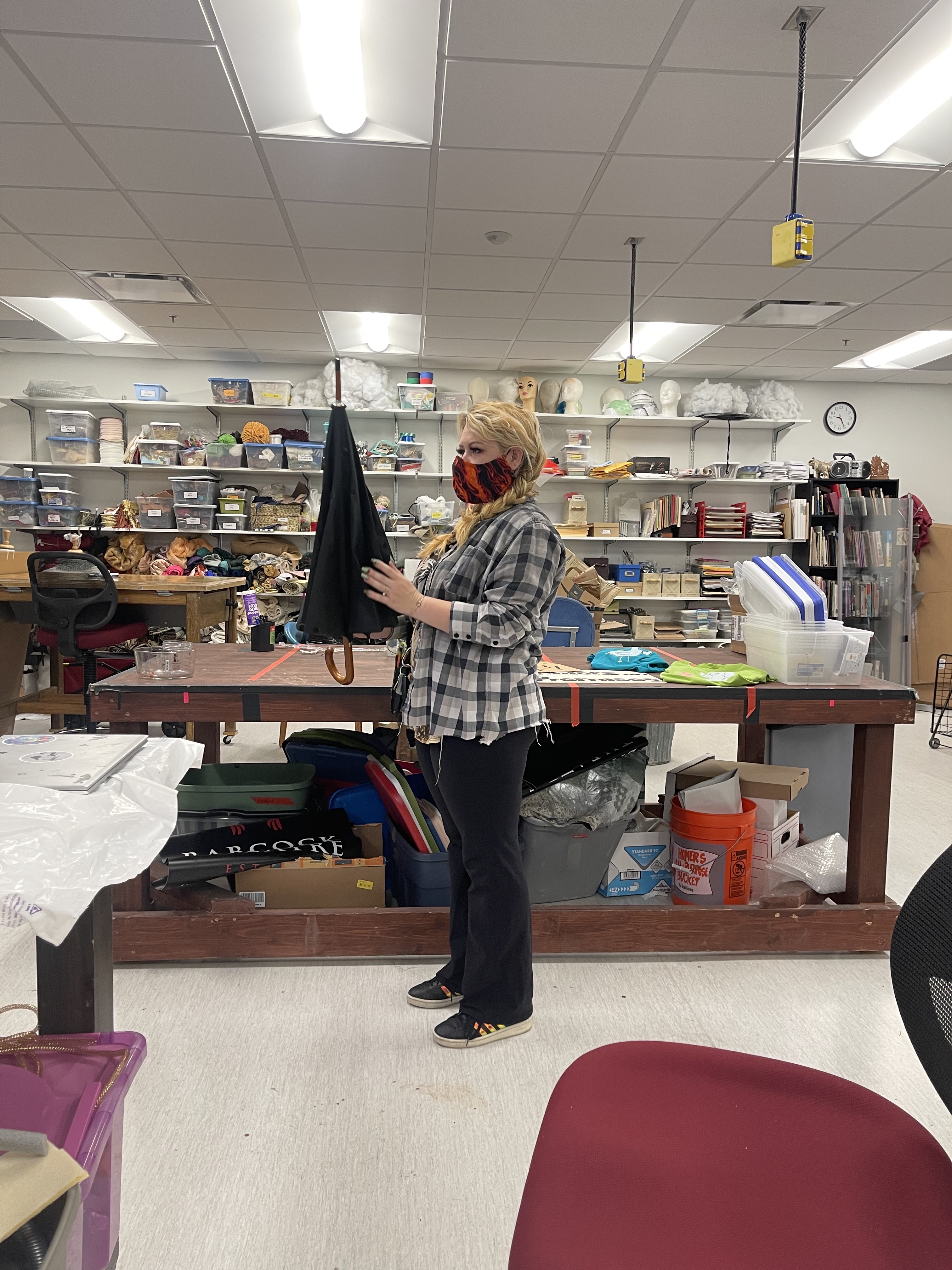 Mae Hinton-Godfrey demonstrates one prop
Mae Hinton-Godfrey demonstrates one prop
“I have enjoyed seeing the progression from a story book into a fully three-dimensional world with a lot more realism than I had initially expected.”
“Naked Mole Rat Gets Dressed: The Rock Experience” is her first foray into props. “I have found that it’s been really helpful to understand the role props plays, filling in the gaps between set and costume. I like seeing where we can support other areas rather than just working in an isolated environment. As a costumer, I tend to try to do everything on my own, and not necessarily communicate with other departments,” she said.
This show has been both more collaborative and more playful than some of those past experiences.
“I am actually really excited for this show because it’s a musical and a kids’ show," Hinton-Godfrey said. "We were going to make a lot of the designs two-dimensional, but it has evolved into some more organic designs. For example, the set is based on some of the beautiful red rock formations here in Utah. I have enjoyed seeing the progression from a story book into a fully three-dimensional world with a lot more realism than I had initially expected.”
Prop artist Sam Dalton is in his final year as a theatre major at the U, then plans to go to grad school for a Master’s in higher education. Besides lending a hand on roots, he was responsible for cue card signs, which he drew free-hand, based on Mo Willems whimsical style. “It was really fun to create the things that get to be sillier, and get interacted with in the show,” he said. “The type face for the signs is called Grilled Cheese!” 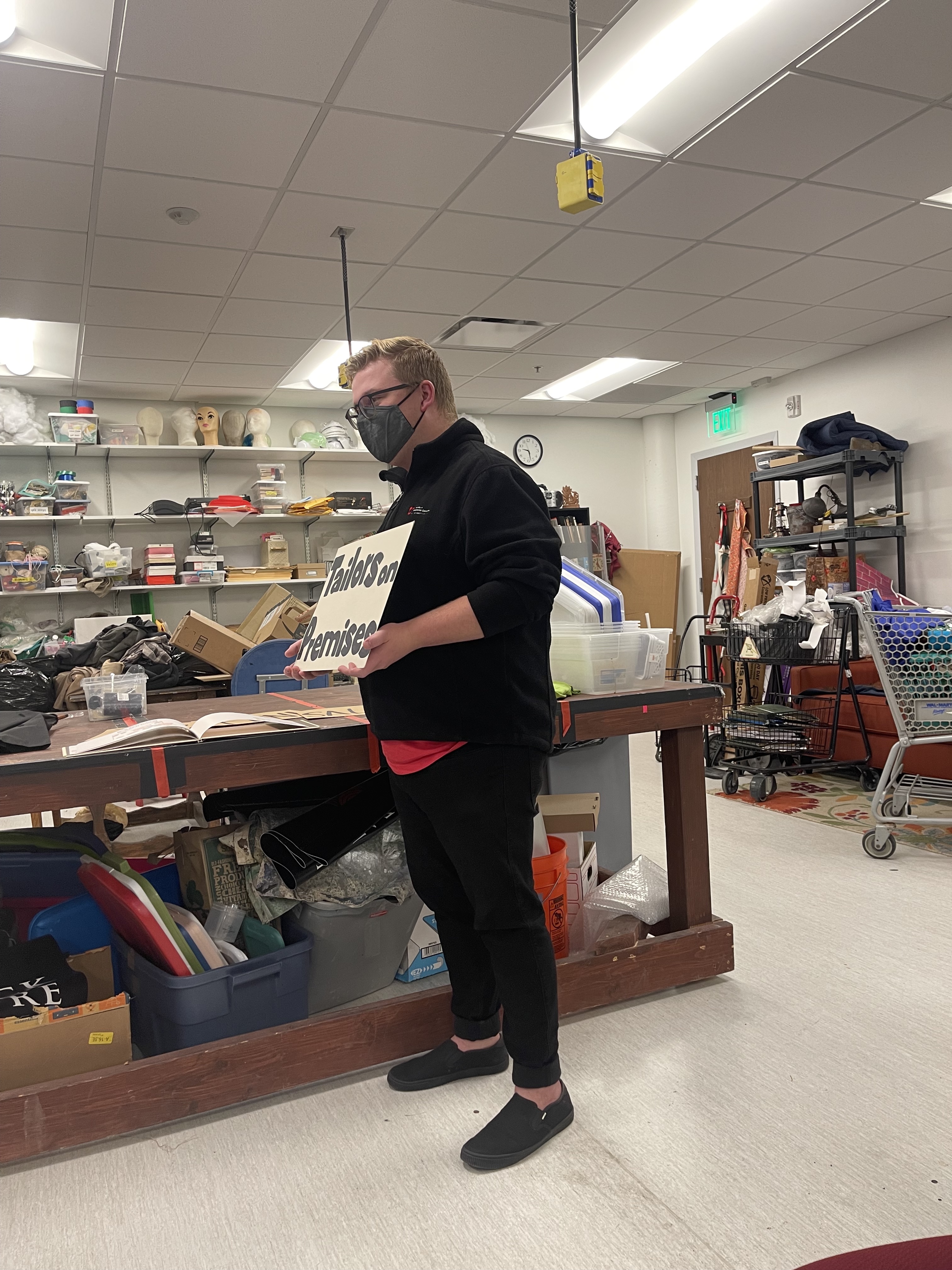 Sam Dalton shares signage
Sam Dalton shares signage
With most of his design experience in set, Dalton is also having fun discovering the world of props. “This process has helped me understand the nuances,” he explained. “Just because something is a clothing item doesn’t mean it’s costumes. It’s really about how it is being used in the show, and who is using it. It has made it easier to develop relationships with other areas that help when you need something to make the show better.”
Disruptions in the supply chain have made this particular process challenging for the team. But creativity has prevailed, and even revealed some exciting innovations.
“Items are more expensive right now, and shipping is more expensive and slower, so we had to be very creative and manage our expectations,” Schockmel said. “We had a plan for how we were going to build things, and then it turned out we couldn’t afford it, so we had to go with plan B. Plan B was garbage, which was better. It was faster, easier, and more creative for all the students involved.”
"Props is something you don’t know you like until you do it. All students have to take a lab aspect, so they will work with costumes, set, props, and sound. I try to grab people that enjoy crafts and encourage them to take my class. It is wonderful for problem solving."
Recycling and sustainability are important to the design team. Many would be surprised to know just how many materials in U Theatre’s shows are repurposed or up-cycled.
“Our technical director salvaged baling wire from a house he was clearing. We had to line everything with wire so we could bend it into the shapes we needed. People were bringing us plastic bags, bubble wrap, and we brought things from home,” Schockmel explained.
They were also beneficiaries of a happy mistake. “Two years ago, there was a mistake in ordering paper towels for our building’s machines, and so janitorial staff came, and asked if we would like the paper towels that didn't fit. We said, ‘Oh yes, we would!’ We’ve used thousands of paper towels to paper mâché. And we got our paint from the Department of Film & Media Arts when they shut down a set last season.”
Additionally, Pioneer Theatre Company donated piles of clothes they were cleaning out from their costume department this summer, and a few costume racks that were on their way to the salvage yard. A win-win for everyone.
Department of Theatre curriculum requires that all students take a design element, even if they are focusing on performance. This prepares them for the professional world, where those in theatre wear various hats.
“Props is something you don’t know you like until you do it. All students have to take a lab aspect, so they will work with costumes, set, props, and sound. I try to grab people that enjoy crafts and encourage them to take my class. It is wonderful for problem solving,” Schockmel said.
Come see the amazing work of this team, as well as the entire cast and crew of “Naked Mole Rat Gets Dressed: The Rock Experience.” We can’t wait to rock with you!
NAKED MOLE RAT: THE ROCK EXPERIENCE
Babcock Theatre
GET TICKETS
PERFORMANCE TIMES
Nov 12 @ 7:00 pm
Nov 13 @ 11:00 am
Nov 13 @ 2:00 pm
Nov 14 @ 2:00 pm
Nov 14 @ 5:00 pm
Nov 18 @ 10:00 am
Nov 19 @ 7:00 pm
Nov 21 @ 2:00 pm*
Nov 21 @ 5:00 pm
*Sensory Friendly performance
ASL INTERPRETER
Nov 19 @ 7:00 pm
Remember, all U students get in free with their U Card, thanks to Arts Pass!
Dean John Scheib elected to International Council of Fine Arts Deans’ Board of Directors
At its 57th Annual Conference, the International Council of Fine Arts Deans (ICFAD) announced University of Utah College of Fine Arts Dean John Scheib as one of three newly-elected members of the Board of Directors.
ICFAD, the multi-national alliance of executive arts administrators, provides professional development opportunities and facilitates forums for the exchange of ideas, information and issues of common concern for the arts in higher education.
In this capacity, Scheib will serve with eight other members who all act as “representatives of the membership, assuring that the organization runs in accordance with the agreed upon mission, policies and laws of the membership.”
He has been a member of ICFAD since 2017 and has served for the last two years as an ICFAD Mentor in its Leadership Development Program and will continue his service on ICFAD’s Leadership Development Committee.
“A key motivation for me throughout my life has been my desire to serve my community as best I can,” Scheib said. “In my professional life, this sense of purpose often manifests itself through engaging in efforts to empower those whom I serve by helping to facilitate growth and the realization of ambitions and aspirations (work that remains to be among the most fulfilling and rewarding to me, personally). I hope to be able to help advance the important work of ICFAD through bringing to the Board and our collective efforts not only someone who greatly values and believes in what we do, but also a multidimensional perspective from having served in a variety of different arts education, leadership, and advocacy roles within a variety of different institutions, communities, and contexts.”
Join us in congratulating Dean Scheib on his new appointment!
Also Sisters screen new work worldwide
Assistant Professors in the U Department of Film & Media Arts, Miriam and Sonia Albert-Sobrino or the Also Sisters, are busy this month screening new films internationally!
Here's a look at their newest work and where it is being shared!
AURA
“AURA,” an experimental film by the Also Sisters premieres October 12 at the 54th edition of the world's foremost international festival of fantasy and horror movies, the Sitges Film Festival (Catalonia, Spain).
“AURA” is one of the only eight films selected to be part of the “Noves Visions Program,” and is a contender for the Best Short film. The “Noves Visions Program” consists of films of all nationalities, previously unreleased in Spain, produced in 2020/2021 and fantasy themed, which are committed to experimentation, new languages and formats, and genre hybridization.
"AURA" was born out of the Artivism4Earth initiative launched by Hasse Borup and Elisabet Curbelo in the U School of Music. The film —made by Sonia and Miriam Albert-Sobrino— is scored by Assistant Professor Elisabet Curbelo. This film is a testament to collaboration as a central quality of the College of Fine Arts.
"FACE NOT RECOGNIZED, TRY AGAIN"
"Face Not Recognized, Try Again," a claustrophobic horror short film will have its worldwide premiere the weekend of October 15th in the city of Telluride, at the Colorado's first and longest-running genre film festival, the Telluride Horror Show. Listed as one of the 50 Best Genre Festivals By Moviemaker Magazine, this festival has gained a notable reputation in the arena of horror.
WHAT'S NEXT
“What’s Next?” a female lead anthology series — partially shot with the support of the students enrolled in the “Grip and Lighting” and “Digital Cinematography” courses taught by Sonia and Miriam — has enjoyed and continues to enjoy remarkable impact:
- The episode “The Foley Artist” was chosen as a finalist for the 13 minutes of Horror Film Festival, a competitive initiative that give women horror filmmakers greater exposure and more opportunities through strategic partnerships. Among many others, this film was hand-picked by well recognized film professionals such as Robin Jones, VP of TV Development & Programming at Blumhouse, the production company behind such horror titles as "Insidious," "Get Out," "The Invisible Man" (2020), and the upcoming "Halloween Kills."
- “The Foley Artist” was additionally awarded with a privileged spot among only other 12 episodes to screen at the popular streaming platform, Shudder.
From August 13th to September 13th, this episode of “What’s Next” —starring former graduate student Elisabeth Lowe and shot during a digital cinematography class during the Spring of 2020— gained international exposure in over 6 countries across the world (US,Canada, UK, Ireland, Australia and New Zealand). Shudder is an American over-the-top subscription video on demand service featuring horror, thriller and supernatural fiction titles, owned and operated by AMC Networks. - The entire series screened as part of the international competitive category at the Carballo Interplay Film Festival, the leading web-series-only-festivals from Spain.
- An additional episode from this series — “Smile More” — will premiere at the Les Femmes Underground International Film Festival next spring 2022. This episode was 1 of 30 shorts chosen from over 5,000 submissions worldwide.
For those interested in seeing the 6 episodes currently available, please head to https://whatsnext.show/
"On the Margins of Metaxy" by Sonia and Miriam Albert-Sobrino debuts internationally
Assistant professors in the U Department of Film & Media Arts, Sonia and Miriam Albert-Sobrino (Also Sisters), have debuted their new short film, “On the Margins of Metaxy,” at the Sydney Underground Film Festival in Australia.
In an exclusive group of only 14 short sci-fi films included in the festival, “On the Margins of Metaxy,” is an experimental film that takes audiences to an imaginary world where the boundaries of the normal are broken or bent.
Audiences can stream the film online until September 26th.
But those local to Salt Lake City will have an exciting opportunity to interact with the film in an even more immersive way.
A transmedia installation piece will debut at the Finch Lane Gallery on October 8th and will run until November 19th. Conceptually inspired by the COVID-19 pandemic, the installation immerses audience in a space of transition inviting them to appreciate the healing qualities of the in-between and of thresholds. Catch a brief preview here.
Viewers can also join Sonia and Miriam during the gallery stroll on October 15th at 6p at the Finch Lane Gallery.
In anticipation of the opening of Utah Museum of Fine Art's "Space Maker" on August 21st, we caught up with Department of Art & Art History alumna Nancy Rivera, curator of the exhibition which features 33 artists from the department's faculty.
As UMFA describes, " 'Space Maker' explores the tensions, histories, and myths that shape our experiences of the world. These works, created by a variety of artists in a dynamic range of media, question the bonds between place and identity, reflect on our relationships to the land, and explore the realities that emerge when an imaginary world is created."
Let's take a closer look at the show.
After a year of isolation, what was it like to come back together on a group show of this size?
What was really cool about curating the exhibition was that when I started looking at the work that the artists produced over the last year or so, it was apparent that everyone was impacted and influenced by some of the same issues. Even though their work is created in such different ways – the materials they use are so different – the ideas and concepts that you see throughout the work started to become a narrative that you could connect to and say, “I felt that same way during the pandemic."
It was interesting to see that in some ways, even though we are isolated, those communal experiences are still very present. We all see the things that we experience in a similar manner.
It’s amazing to see that your professors, the people you are learning from and interacting with now in such a big way, are creating such elevated work. It’s something that they should feel inspired by and really proud of – that we have this type of talent within the University of Utah. I really hope students will go and see the show.
How did the "Space Maker" theme emerge and what do those words mean to you?
A lot of the work the artists created very much explored the idea of place – how we relate to it, how we engage with it, how we perceive it. We were forced to be confined in our homes, and were hyper-aware of the things that surround us – and as artists you tend to look at things through a different lens. So they created, in their own way, an interpretation of the spaces they were in, or really thinking about, or even missing and grieving throughout this pandemic. I think it's something you can apply to a lot of the work.
I also wanted to create an idea to view the show in a way that was broad enough that you could find different types of interpretations, because we have 33 artists. The work that they produce is so varied in process and concept. Looking at it through this lens of thinking about space, and their creation of it, is something that everybody can say they think about through their work. Every one of the artists is working with very specific ideas and themes their work is connected to, but in the end, I think there is an overarching idea of a sensibility towards space that connects them all.
What was the logistical process like?
Coordinating all of this is such a big team project, and I could not have done any of this without the UMFA’s amazing staff support. They have this down. All of the artists were invited to submit up to three works, and then I selected the ones I wanted to include in the exhibition. And there were discussions around “how does this fit the theme?” 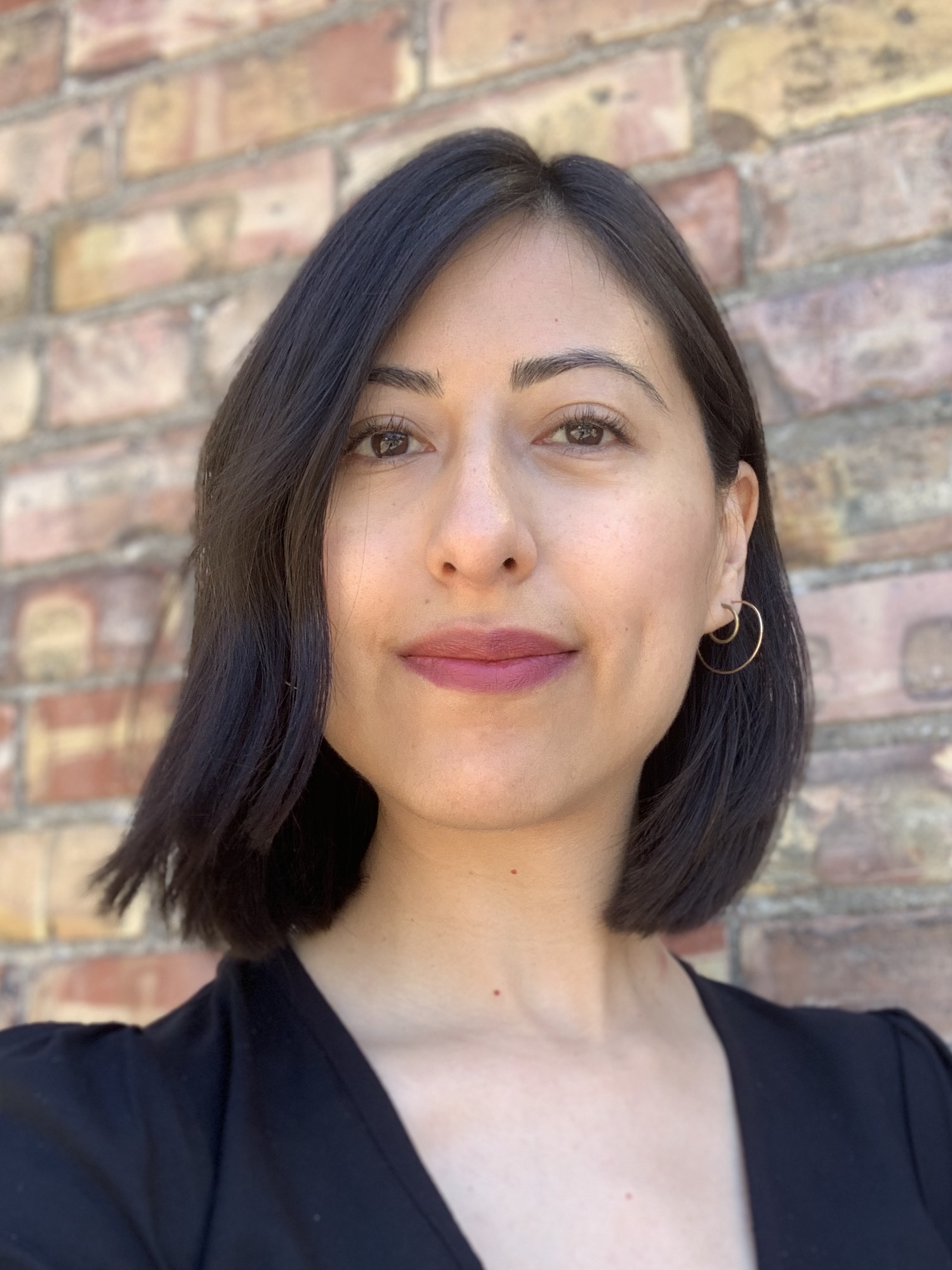 Nancy Rivera, "Space Maker" curator and U alum
Nancy Rivera, "Space Maker" curator and U alum
When I first started selecting works, I wasn’t thinking about an overall theme. The theme came to me as the work was selected and I was looking through artist statements and titles, and information about each of the works. It was more about selecting the best works aesthetically – the craft and the concept. Everybody is so talented. In the end, the decision of what works were included was very intuitive, selecting work that was representative of each of those artist’s careers but that also spoke to a sensibility for the times that we are living in.
There are some great moments in the exhibition of really unexpected materials. And, also how artists took this moment of being isolated, not being able to enter certain spaces, and took that as an inspiration to create. Sometimes I think that without having had something so profound happen to us, some of those ideas would not have emerged. Much of the work was made in the past year or two, and a majority was created during the pandemic. To see the way that they were inspired to create in that period of time was amazing. These are artists whose work I am really familiar with from my time being their student and even before that. So it's been great to see how their work continues to grow.
What is it like to work with the faculty, now as an alum?
It's such a different dynamic. I still look up to a lot of them, and I am so honored to be able to work with them as a curator, in a way that i never expected. I am grateful for the way that they have embraced my role in the exhibition. It has been great to have one-on-one conversations and brainstorms with them about their work.
And why should students go to "Space Maker?"
It’s amazing to see that your professors, the people you are learning from and interacting with now in such a big way, are creating such elevated work. It’s something that they should feel inspired by and really proud of – that we have this type of talent within the University of Utah. I really hope students will go and see the show.
We can't wait to see the work from these 33 wonderful artists:
Edward Bateman
Simon Blundell
Laurel Caryn
Erika Cespedes
Lewis J. Crawford
Al Denyer
Elizabeth DeWitte
John Erickson
Haynes Goodsell
Joshua Graham
Michael Hirshon
Trishelle Jeffery
Lenka Konopasek
Beth Krensky
Naomi Marine
V. Kim Martinez
Kylie Millward
Martin Novak
Marnie Powers-Torrey
Andrew Rice
Vanessa Romo
Sylvia Ramachandran Skeen
Brian Snapp
Carol Sogard
Paul Stout
Natalie Oliver Strathman
Amy Thompson
Emily Tipps
Maureen O’Hara Ure
Adam Watkins
Moses Williams
Wendy Wischer
Jaclyn Wright
"Space Maker" runs from August 21 to December 5, 2021. For more information, please visit https://umfa.utah.edu/space-maker.
Remember, students get in FREE thanks to Arts Pass!

Eleanor (Ellie) Otis, a student in the University of Utah Department of Theatre, and Yein Ji from the Department of Film & Media Arts have been awarded funding for Summer 2021 to conduct research in their artistic disciplines. This opportunity is provided through the Undergraduate Research Opportunities Program (UROP).
UROP gives undergraduate students and faculty mentors the opportunity to work together on research or creative projects. The program provides a stipend and educational programming for students who assist with a faculty member’s research or creative project or who carry out a project of their own under the supervision of a faculty member. Students may apply for UROP any semester and may be eligible for a one-semester renewal. UROP awardees are hired as temporary, part-time UROP Participants by the Office of Undergraduate Research and are paid $1,200 for 120 hours of research or creative work during the semester.
Here's a glimpse into what these two students are working on:
Eleanor Otis, Department of Theatre
Faculty Mentor: Alexandra Harbold
"I'm co-directing a production of 'King Lear' this summer for my UROP project through a feminist perspective. I've always loved Shakespeare and have engaged with productions of Lear before, but it wasn't until I sat down and read the text last year that I realized how much society had fit Goneril and Regan into the roles of villains, when the actual text does not reflect that. Instead, it reflects two women in a patriarchal society who have had to put up with their manipulative and abusive father in order to survive. I was fascinated and horrified to learn that I, as a feminist and avid reader of Shakespeare, had still fallen into the trap of viewing these two as villains. Through my UROP research, I want to reach out to different communities to learn why Goneril and Regan are viewed in this manner, and then I hope to work closely with the cast to restructure the narrative of these two from villains to oppressed and struggling women who succumb to the hate around them in their attempt to survive. I then hope to present this production to said communities and talk with them about whether or not my team and I were able to successfully change their views on these sisters."
Yein Ji, Department of Film & Media Arts
Faculty Mentor: Emelie Mahdavian
"I am researching movies that depict depression and then creating a short film based on my findings. I myself have depression and I don't see many movies that accurately showcase it, so I want to create a short film that is reflective of my own experience. Analyzing these movies will help me decipher what works and what doesn't, thus helping me create a great film."
For more information and for upcoming deadlines, visit UROP's website!

